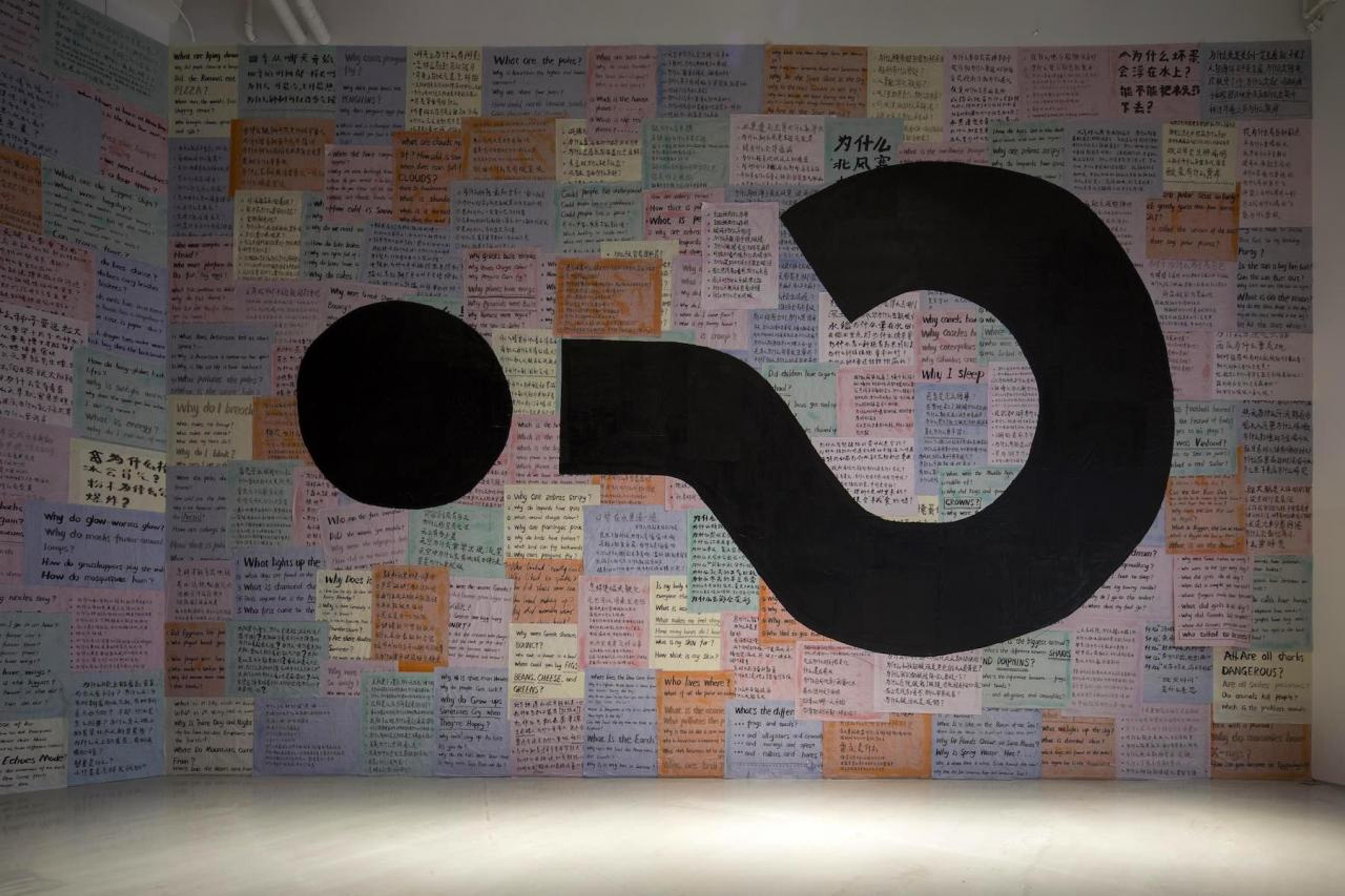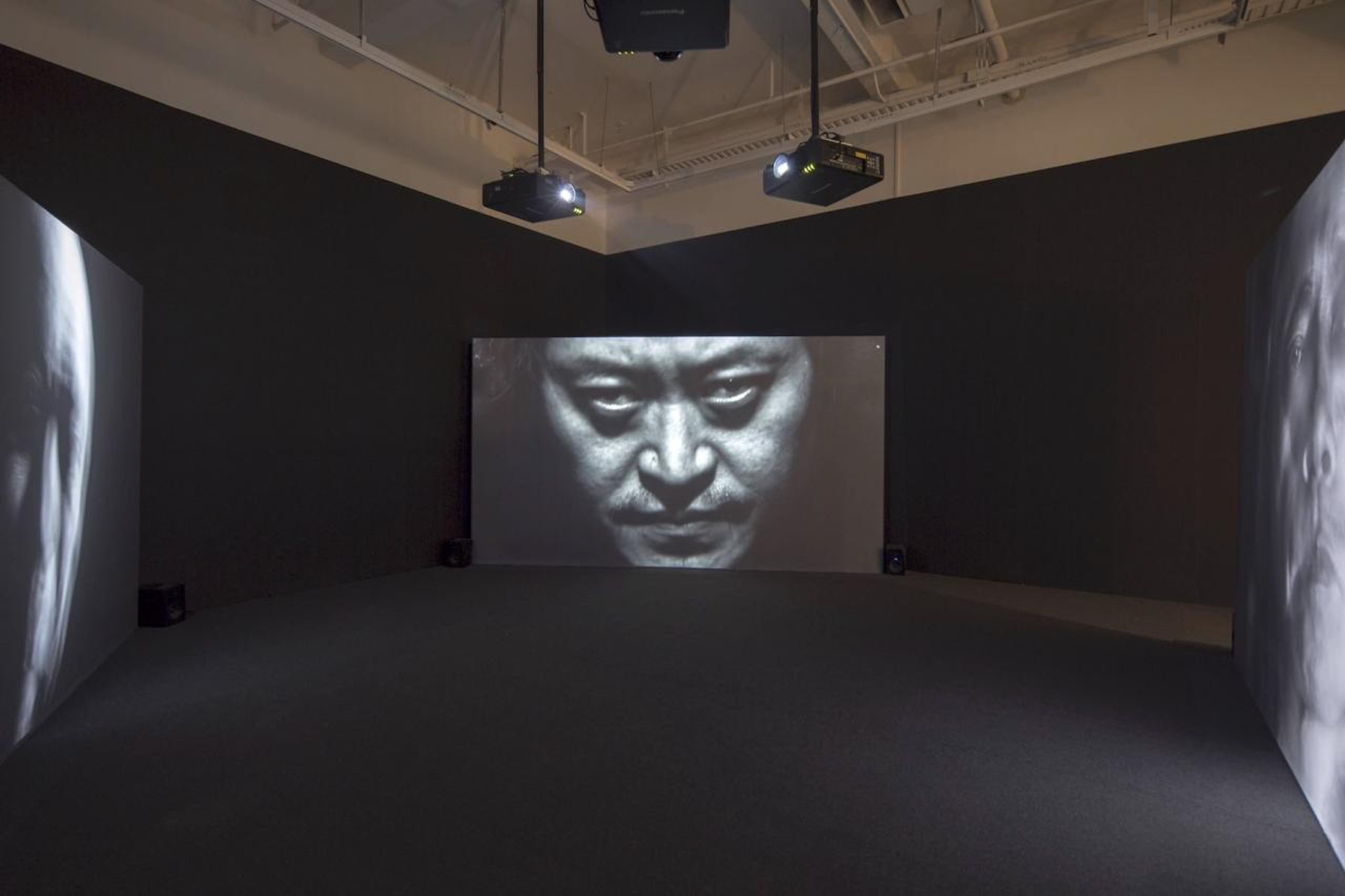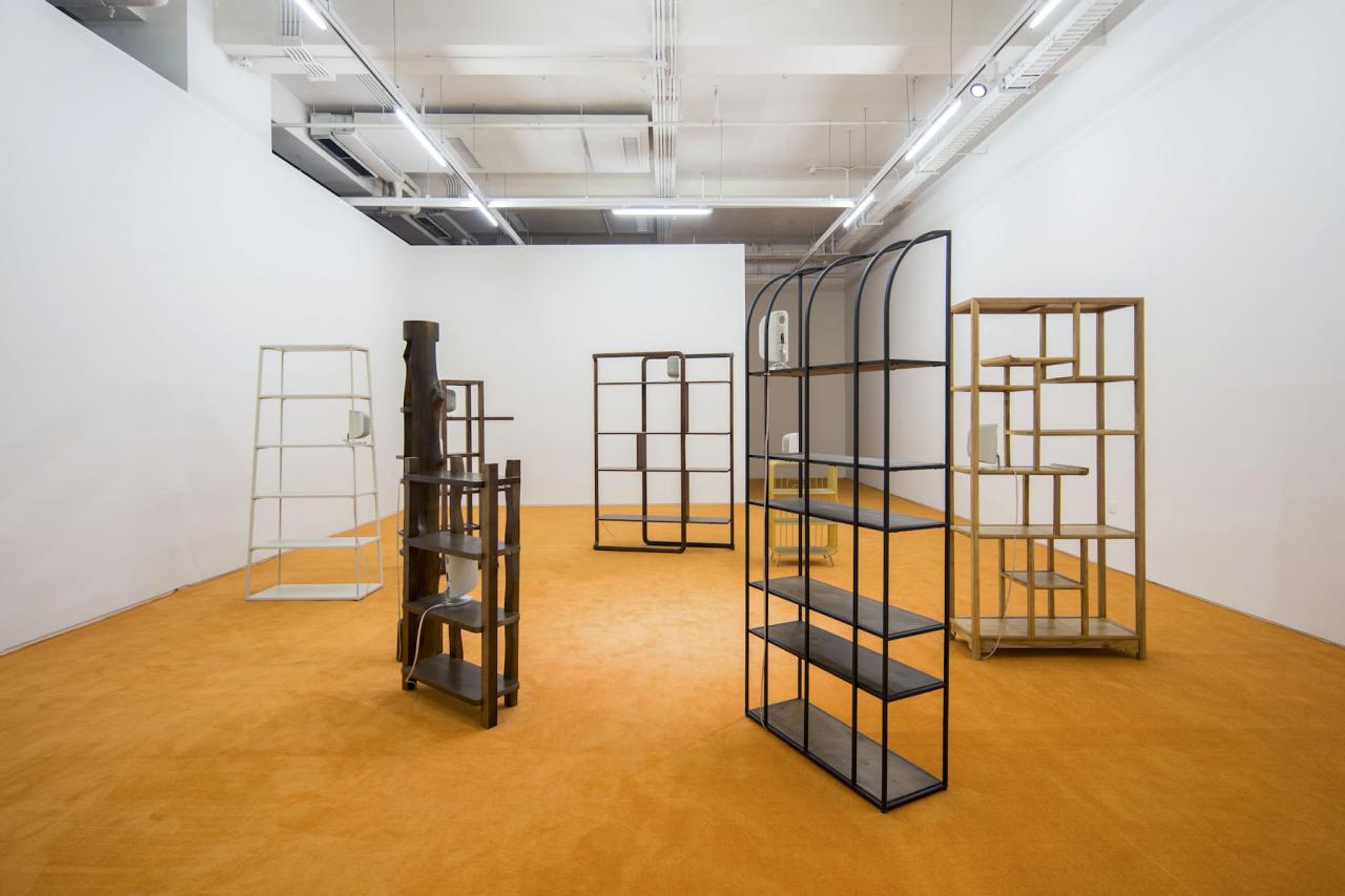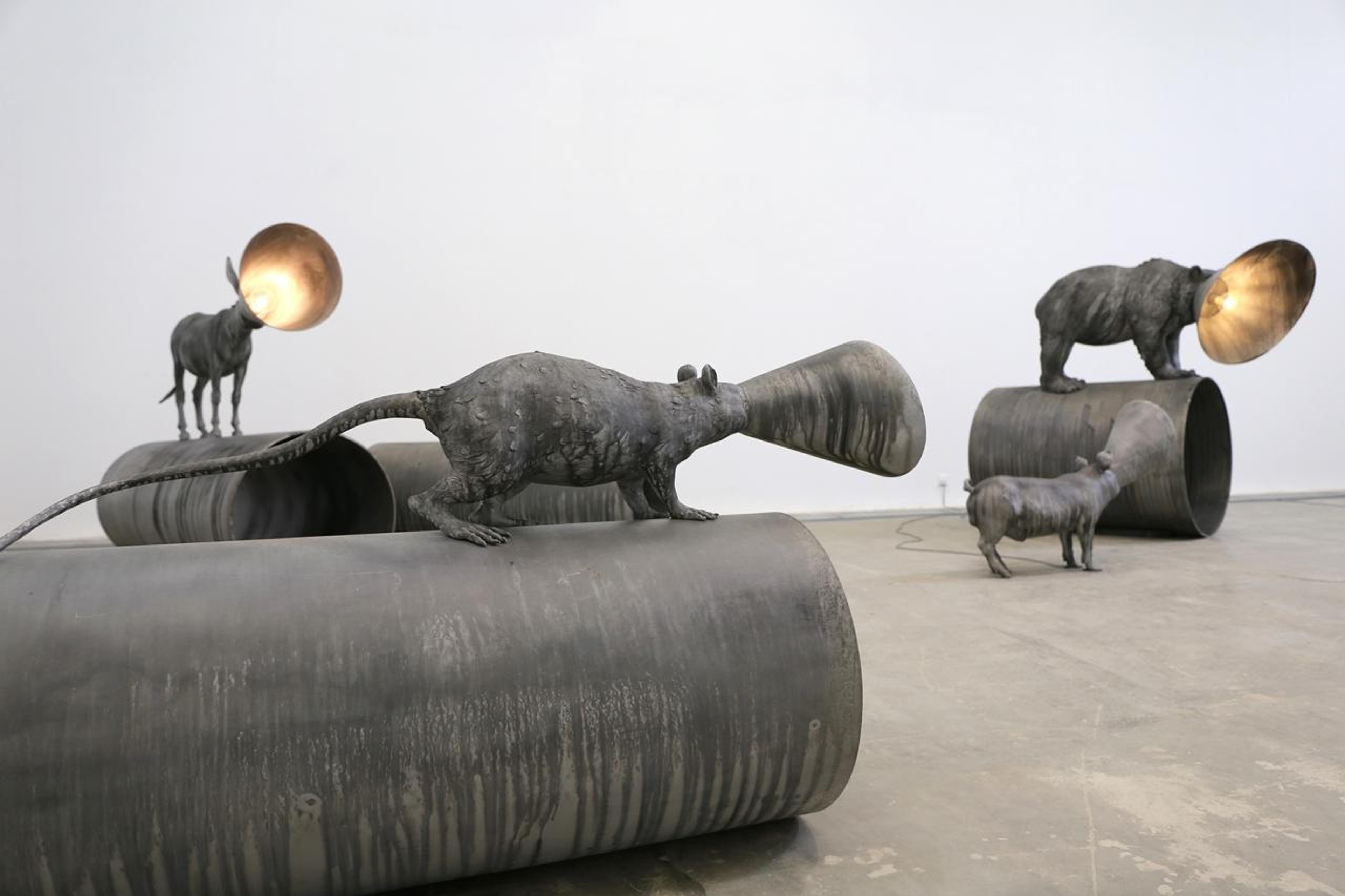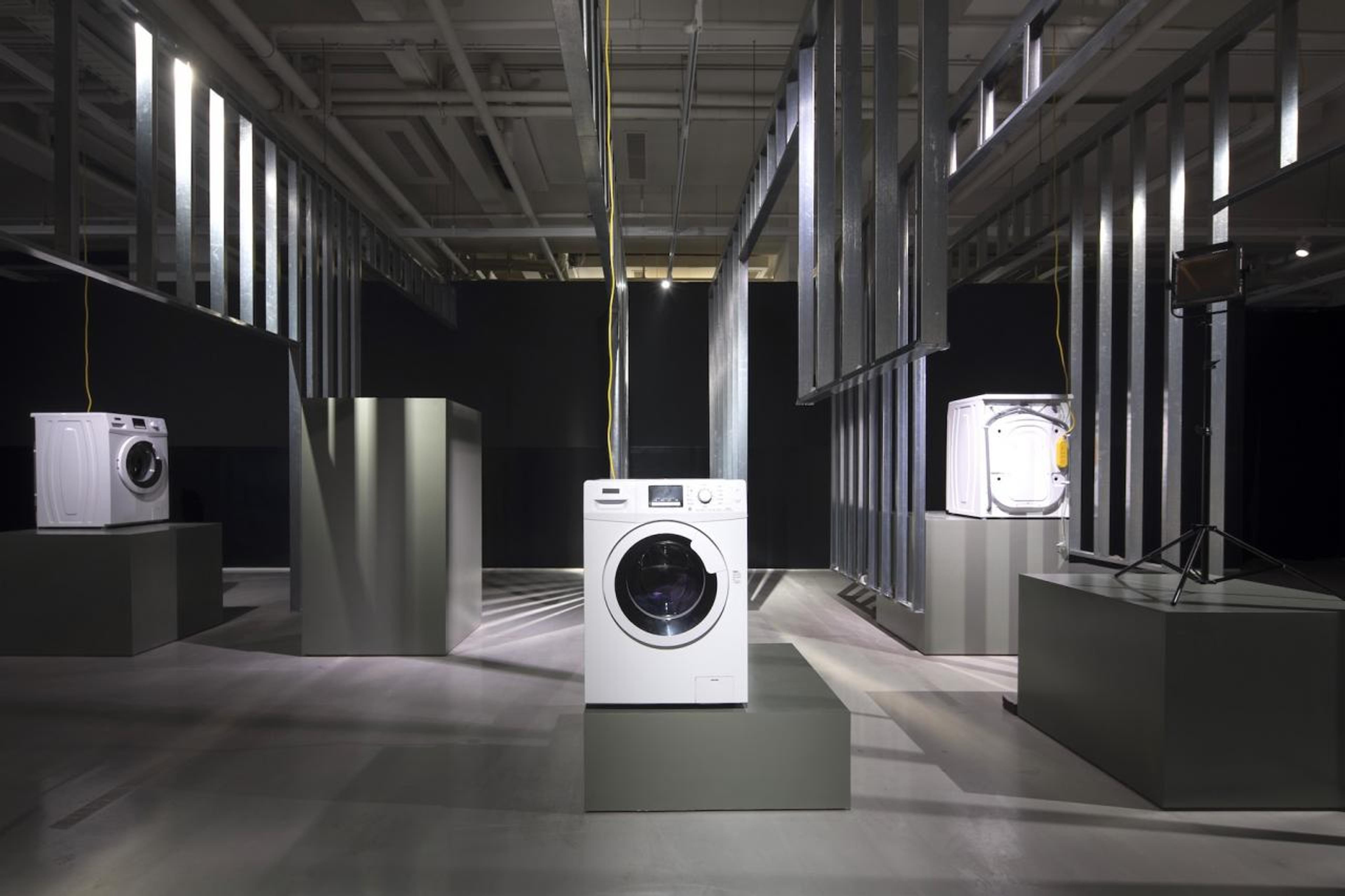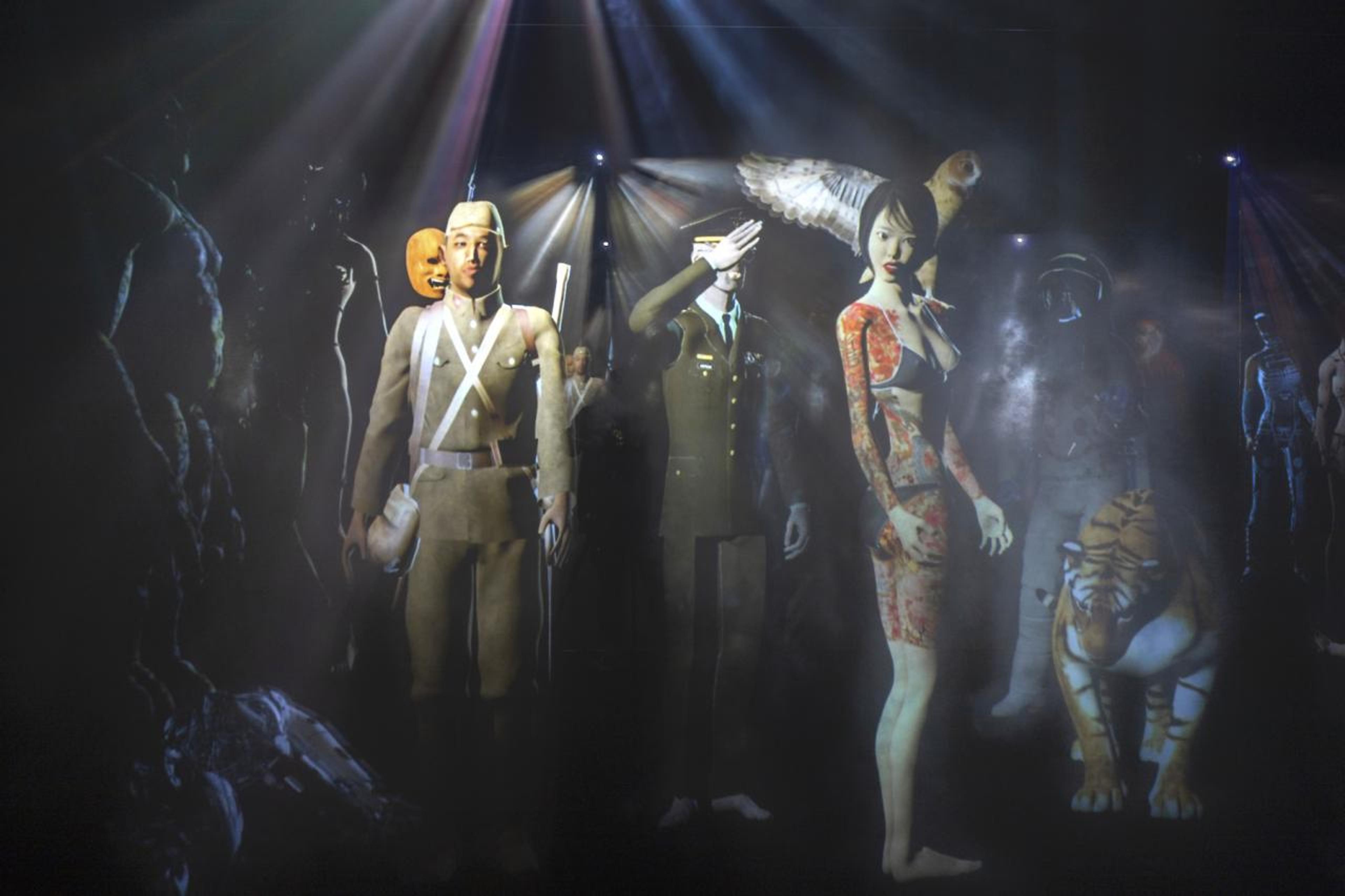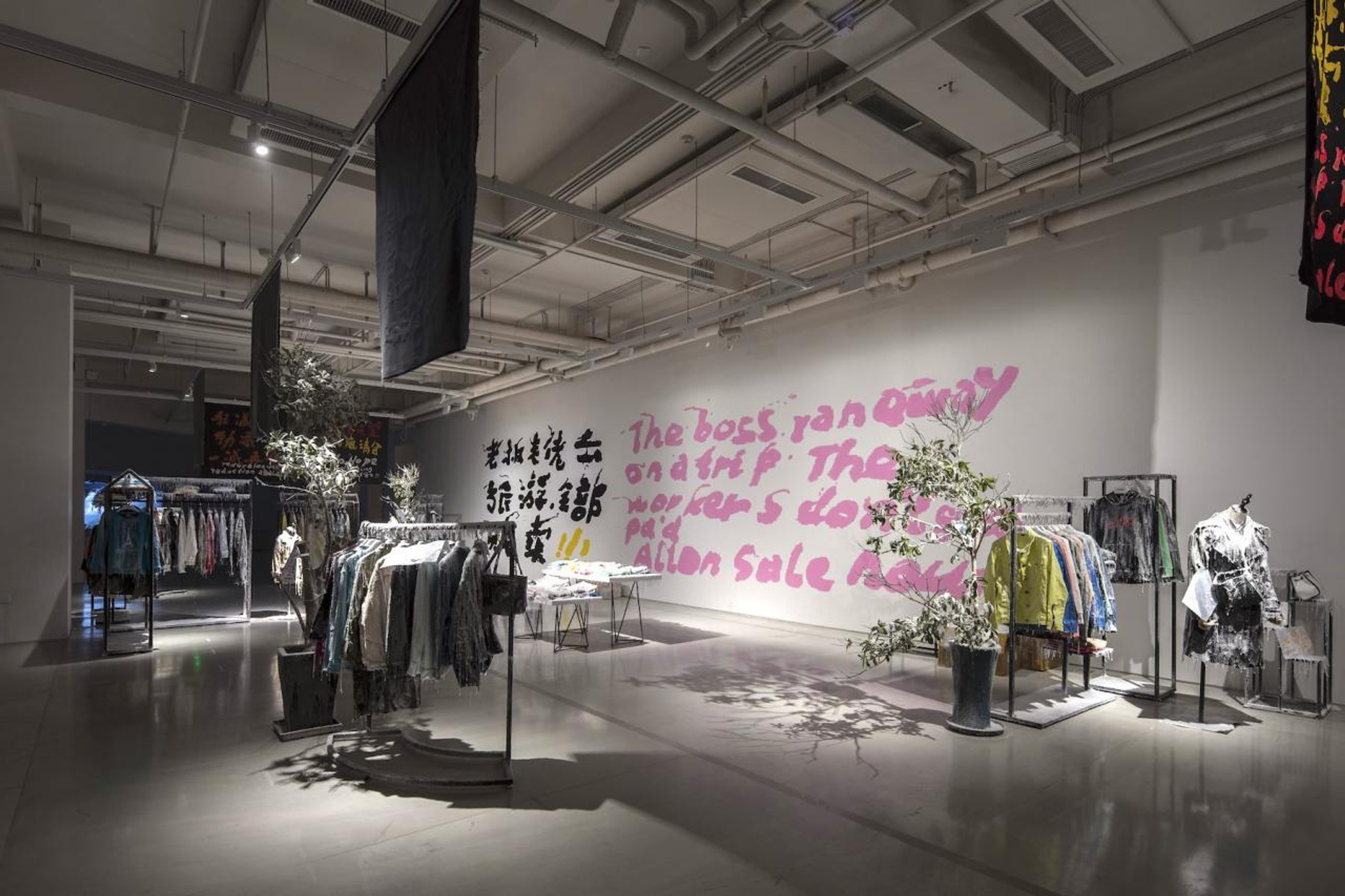“Heteroglossia”, a term coined by Russian linguist Mikhail Bakhtin in 1934, describes when multiple dialects and types of speech collide within a single authorial source. At the HOW Art Museum (a hotel-museum hybrid owned by businessman Zheng Hao, who has turned his name into a homonymous question), the word has been adopted as a framework to examine the changes and permutations that China has undergone in the era of globalisation. Entering the space, a large question mark is inked onto a wall colourfully papered with bewilderingly random questions. The piece The Great Wall? (2017) by Chinese artist Wang Qingsong sets up the premise that confusion can produce dialogue.
The following gallery has been turned into what appears to be a clothing store from the ice age. Yangjiang Group’s Last Day (2015/2018) is an immersive installation that presents a boutique outpaced by e-commerce just before its closing. Wax icicles drip from garments, and signs hang above them reading dejectedly, “No Hope, Everything Must Go,” and “Reduction and Reduction Again!” The back wall bears a handwritten testimony: “The boss ran away on a trip. The workers don’t get paid. All on sale now.”
Wang Qingsong The Great Wall? (2017) Courtesy of the artist
Proceeding onwards, one encounters subtler scenes of disenfranchisement. Fiona Tan’s Ghost Dwellings I–III (2014) expands across three screens, each revealing abandoned landscapes that could be anywhere but are in fact in the US, Ireland, and Japan. These muted scenes are coincidentally soundtracked by melodies emanating from the next room where Peng Hung-Chih’s three-channel music video Propaganda Trilogy (2008–18) alternates between uplifting and melancholic, as various patriotic songs (the most recognisable taken from Robert Altman’s 1975 film Nashville ) are translated into Korean, Chinese, and Japanese, and ring with nostalgic overtones of the good old days.
In Chinese, several words for “gloss” imply an act of subterfuge, craftiness, or deceit. In English, “glossing over” is a cursory engagement, sparing oneself and others the laborious effort of full knowing or comprehension with something snazzier and more superficial. Making glossy, therefore, always seems to indicate the smoothing over of imperfections or inconsistencies by way of obscuring something else. Glossiness both draws in and distracts. In the babel of heteroglossia, the question becomes: What is being smoothed over and at whose expense? What freedoms does a surface emanate, withhold, or afford?
Peng Hung-Chih Propaganda Trilogy (2008-2018) Courtesy of the artist
In contemporary China, efforts to promote a single monolithic cultural and historical narrative are ongoing – most recently witnessed in the western region of Xinjiang where ethnic minorities are being persecuted as well as in the continuing battle of internet censorship. While all of the artists in “Heteroglossia” seem to have some Sino-affiliation, many grew up or were educated in non-Chinese contexts.
While works by artists working outside of China seem to speak loudly, those coming from within tend to be characterised more by subtlety and abstraction
On the opening night, Indonesian-born and Dutch-raised performance artist Tiong Ang staged an act of institutional critique employing the latest brand of Chinese washing machines as a rhetorical device; the “white cube” household appliance alluded to cyclical processes of removal and renewal. Amongst these whirring machines, Dutch and Chinese performers enacted scenarios that attempted to confound cultural stereotypes for more than nine and a half hours.
While works by artists working outside of China seem to speak loudly, those coming from within tend to be characterised more by subtlety and abstraction. Xiao Yu’s video Thinking too much will...No. 3 (2015), which features a hyper-defined bamboo rope twisting agonisingly slowly while releasing debris into the air, is deliberately without explanation. Meanwhile, Lu Lei’s installation Pretending Egomania (2015), a constellation of aluminium animals bearing lampshades with flickering lights as heads, appears to speak in undecipherable Morse code.
____ADVERTISEMENT____Art Basel Hong Kong (2776)
Together these artists examine and evidence how culture and identity are reconfigured through the economic and materially driven processes of displacement, but one narrative that may get glossed over is the diversity of voices coming from within the region. Globalisation is thus figured as a general phenomenon, and the sharp valence of Bakhtin’s “hybrid utterance”, which might call authoritative views into question through the rapturous colliding of registers, is reconciled as a convivial plurality – a mingling of voices that converse peacefully despite their inherent differences. The question is: How do we break through this protective sheen and listen to the complexities that lie beneath?
“Heteroglossia”
HOW Art Museum
7 November 2018 – 17 February 2019
– This text appears in Spike #58 . You can buy it in our online shop –
Samson Young Bookshelf Music (2015, revised in 2018) © Samson Young; Courtesy Galerie Gisela Capitain, Cologne and Edouard Malingue Gallery
Lu Lei Pretending Egomania (2015) Courtesy of the artist and ShanghART Gallery
Tiong Ang Misconceptions of the Lyrical Cube (2018) Courtesy of the artist
Ho Tzu Nyen NO MAN (2015) Courtesy the artist and Edouard Malingue Gallery
Lu Lei The Dilemma of Apollo and Dionysus (2017) Courtesy of the artist and ShanghART Gallery
Yangjiang Group Last Day (2015) Courtesy the artists and Vitamin Creative Space



